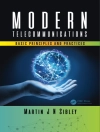The book explains the classification of a set of Walsh functions into distinct self-similar groups and subgroups, where the members of each subgroup possess distinct self-similar structures. The observations on self-similarity presented provide valuable clues to tackling the inverse problem of synthesis of phase filters. Self-similarity is observed in the far-field diffraction patterns of the corresponding self-similar filters.
Walsh functions form a closed set of orthogonal functions over a prespecified interval, each function taking merely one constant value (either +1 or −1) in each of a finite number of subintervals into which the entire interval is divided. The order of a Walsh function is equal to the number of zero crossings within the interval. Walsh functions are extensively used in communication theory and microwave engineering, as well as in the field of digital signal processing. Walsh filters, derived from the Walsh functions, have opened up new vistas. They take on values, either 0 or π phase, corresponding to +1 or -1 of the Walsh function value.विषयसूची
Walsh Functions.- Self-similarity in Walsh Functions.- Computation of Farfield Diffraction Characteristics of radial Walsh Filters on the pupil of axisymmetric imaging systems.- Self-similarity in Transverse Intensity Distributions on the Farfield plane of self-similar radial Walsh Filters.- Self-similarity in Axial Intensity Distributions around the Farfield plane of self-similar radial Walsh Filters.- Self-similarity in 3D Light Distributions near the focus of self-similar radial Walsh Filters. Conclusion.
लेखक के बारे में
A B.Sc. (Hons) Physics graduate and postgraduate of Applied Physics with a doctorate from the University of Calcutta, Kolkata. Prof. Lakshminarayan Hazra has over four decades of academic and industrial experience. He is an Emeritus Professor and Former Head of the Department of Applied Optics and Photonics at the University of Calcutta, Kolkata, India. His areas of professional specialization include lens design/optical system design, image formation & aberration theory, diffractive optics, and optical and photonic instrumentation. He is a Fellow of the Optical Society of America, and the International Society for Optics and Photonics (SPIE). He is the Editor-in-Chief of the archival journal, Journal of Optics, published by M/s Springer in collaboration with the Optical Society of India. He has published more than 150 journal articles and books.
Pubali Mukherjee holds B.Sc. (Hons.), M. Tech. and Ph.D. degrees, all from the University of Calcutta. Currently, she is an Assistant Professor in Electronics and Communication Engineering Department at the MCKV Institute of Engineering, Howrah, West Bengal, India. She has 10 years of teaching and 5 years of research experience. Her areas of interest include optical systems, image assessment criteria and diffraction pattern tailoring using phase filters and applications. She has published many papers in journals and conference proceedings.












